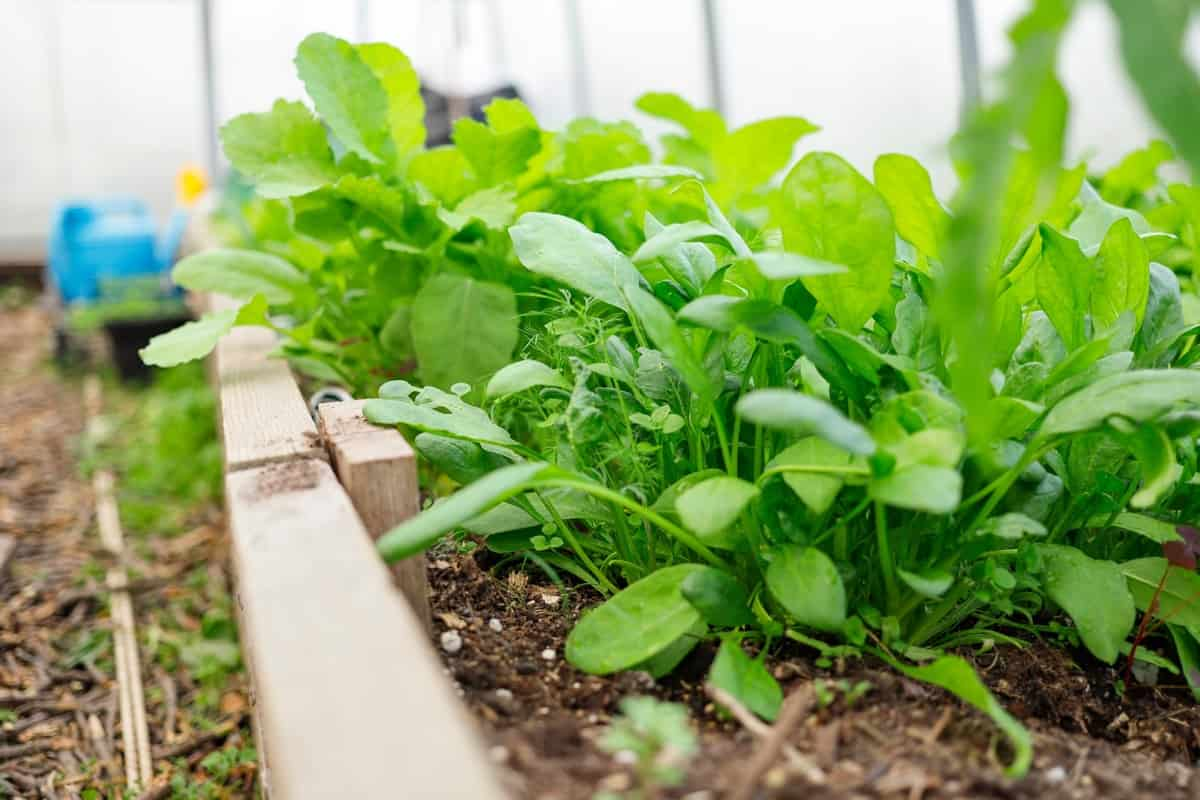So, you’ve just planted spinach in your garden and you’re excited for a fresh, homegrown salad in no time. But before you know it, your spinach plants start to bolt, leaving you wondering what went wrong. Don’t worry, we’ve got you covered. In this article, we’ll share some expert tips on preventing spinach bolting and keeping your plants healthy throughout the growing season. From choosing the right varieties to providing optimal growing conditions, we’ll show you how to enjoy a bountiful harvest of delicious spinach leaves all summer long. Say goodbye to bolting and hello to thriving spinach plants!
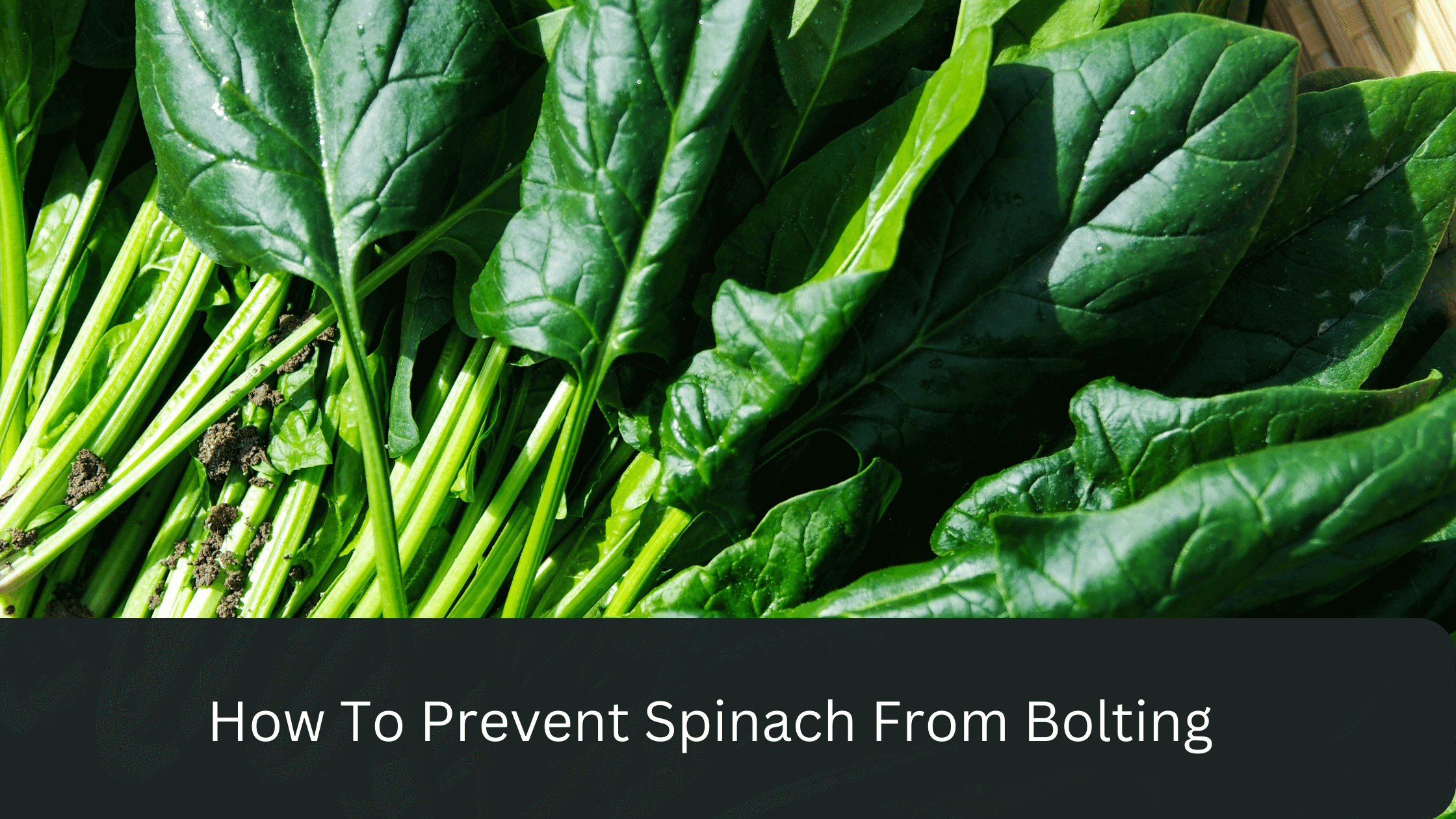
Understanding Spinach Bolting
Spinach bolting refers to the process in which spinach plants prematurely produce flowers and go to seed. This natural response is triggered by various environmental factors that disrupt the plant’s growth and development. While spinach bolting is a sign that the plant is transitioning to its reproductive phase, it can be detrimental to its overall productivity. In this article, we will delve into the causes of spinach bolting, its effects on the plant, and discuss effective strategies to prevent it.
Causes of Spinach Bolting
Spinach bolting is primarily triggered by environmental conditions, such as temperature and light exposure. When exposed to high temperatures or extended periods of intense light, spinach plants perceive these conditions as a signal to begin the reproductive phase. Additionally, inadequate spacing, improper planting techniques, and erratic weather patterns can also contribute to spinach bolting. Understanding these causes is crucial in implementing preventive measures.
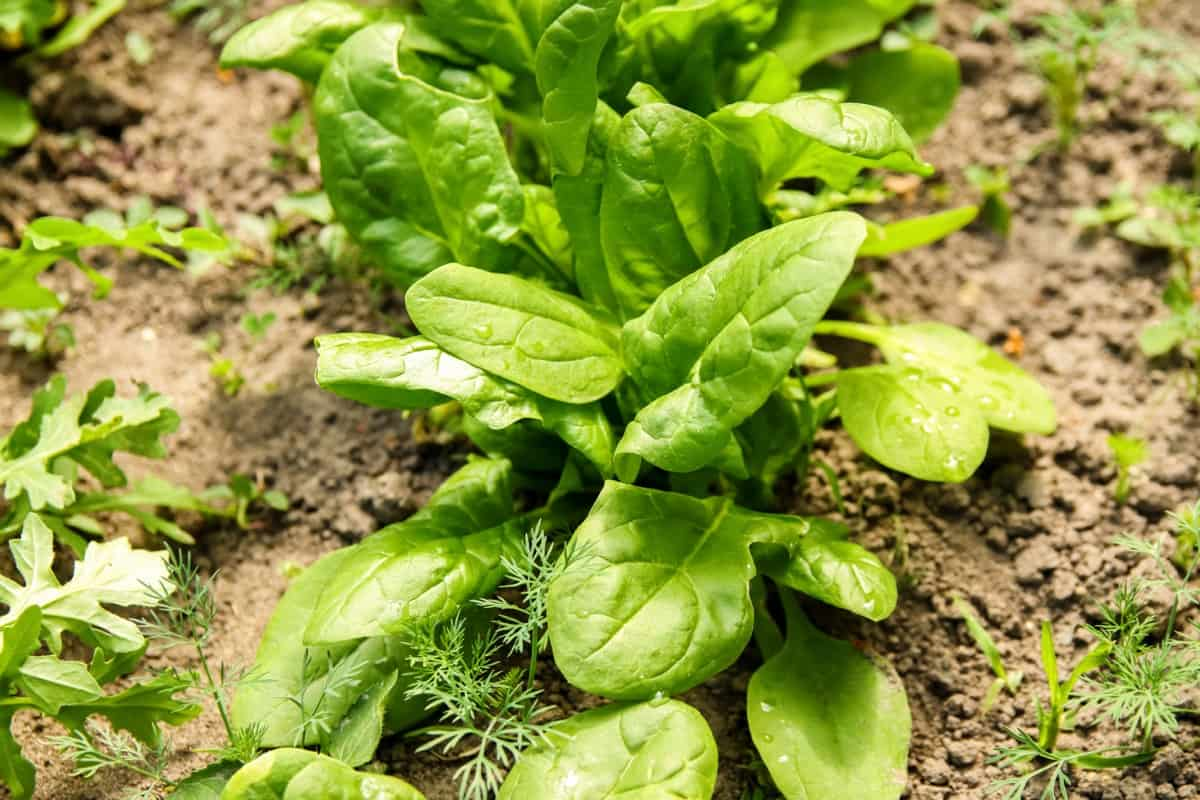
Effects of Spinach Bolting
Spinach bolting not only alters the appearance of the plant but also affects its taste and texture. The leaves of a bolting spinach plant become bitter and tough, rendering them less palatable for culinary use. Moreover, the energy and nutrients that were intended for leaf production are redirected towards flower and seed development, leading to reduced leaf growth. This diminishes the overall yield of the spinach crop and can be frustrating for gardeners or farmers.
Planting and Maintenance Tips
To prevent spinach bolting, it is essential to adopt proper planting and maintenance practices. By following these tips, you can ensure a healthier and more productive spinach crop.
Choosing the right spinach varieties
Selecting appropriate spinach varieties is crucial in preventing bolting. Look for varieties specifically bred for their bolt resistance. These varieties are more likely to withstand unfavorable environmental conditions and are less prone to premature flowering.
Optimal planting time
Timing is everything when it comes to preventing spinach bolting. Planting spinach too early in the spring or late in the fall when temperatures fluctuate can increase the risk of bolting. Aim to plant spinach during cooler periods when the temperature remains consistently below 75°F (24°C). This will help the plants establish and grow before the onset of extreme heat.
Proper soil preparation
Preparing the soil adequately is imperative for healthy spinach growth. Spinach prefers fertile, well-draining soil with a pH level of 6.5 to 7.5. Before planting, amend the soil with organic matter, such as compost or well-rotted manure, to improve its texture and nutrient content. Avoid compacted or waterlogged soil, as these conditions can hinder root development and increase the chances of bolting.
Ideal planting depth
Plant spinach seeds at a depth of ¼ to ½ inch (0.6 to 1.3 cm) for optimal germination. If the seeds are planted too shallow, they may dry out quickly. On the other hand, if they are buried too deeply, emergence may be delayed, potentially exposing the plants to unfavorable conditions and increasing the risk of bolting.
Watering and irrigation
Proper watering is crucial for preventing spinach bolting. Keep the soil consistently moist but not waterlogged. Avoid overhead watering, as wet foliage can promote the onset of fungal diseases. Consider using a drip irrigation system or a soaker hose to deliver water directly to the base of the plants, minimizing water loss and reducing the risk of bolting.
Fertilization requirements
Spinach plants have relatively moderate fertilizer requirements. Before planting, incorporate a balanced fertilizer into the soil to provide essential nutrients. Once the plants are established, side-dress them with a nitrogen-rich fertilizer every three to four weeks to support healthy leaf growth. Avoid excessive nitrogen fertilization, as it can promote bolting.
Thinning and spacing
Proper spacing is crucial in preventing spinach bolting. Overcrowded plants compete for nutrients, sunlight, and moisture, increasing stress and the likelihood of bolting. Thin out the seedlings to ensure plants are at least 3 to 4 inches (7.6 to 10 cm) apart. This allows for better airflow and reduces the risk of diseases commonly associated with crowded plants.
Mulching benefits
Mulching offers numerous benefits, including regulating soil temperature and moisture levels, suppressing weed growth, and preventing soil erosion. When it comes to spinach, applying a layer of organic mulch around the plants can help maintain consistent soil temperature and moisture, thus reducing stress and the chances of bolting.
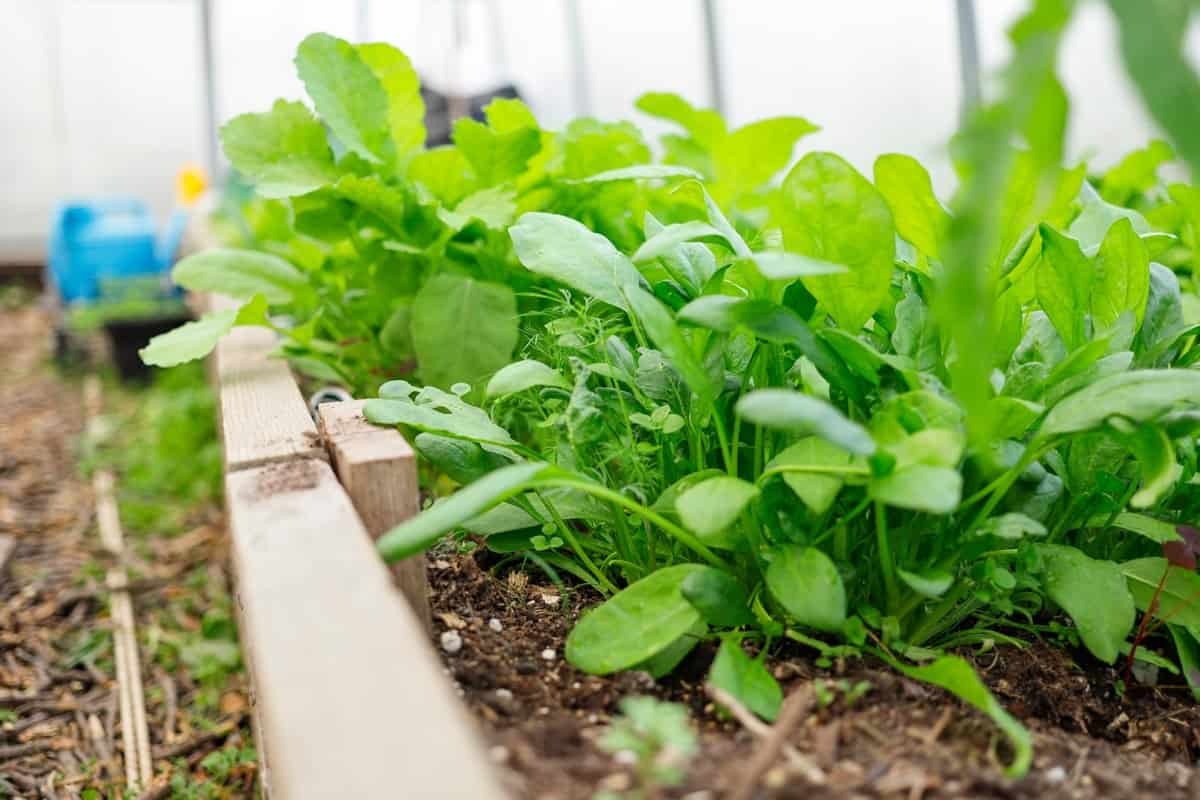
Managing Temperature and Light Exposure
Controlling temperature and light exposure is vital in preventing spinach bolting. By implementing these strategies, you can create an environment that discourages premature flowering.
Ideal temperature range
Spinach thrives in cooler temperatures. To prevent bolting, aim to keep the temperature within the range of 50°F to 75°F (10°C to 24°C). Providing consistent cool temperatures can help delay the shift to the reproductive phase and encourage prolonged leaf production.
Providing shade
When exposed to direct sunlight for an extended period, spinach plants are more likely to bolt. If you live in an area with intense sunlight or experience heatwaves, consider providing shade to your spinach crop. Erecting shade cloth or planting taller crops nearby can help create partial shade, protecting the plants from excessive sunlight and reducing the risk of bolting.
Using row covers
Using row covers is an effective method to regulate temperature and light exposure. Row covers act as a physical barrier, shielding spinach plants from extreme weather conditions, including excessive heat and light. In cooler climates, row covers can also offer protection against frost, allowing you to extend the growing season and enhance productivity.
Avoiding extreme light exposure
Limiting the exposure of spinach plants to intense or prolonged light can significantly reduce the chances of bolting. Keep in mind that optimum growth occurs under moderate or filtered light conditions. If your garden receives intense sunlight, consider locating your spinach bed in a partially shaded area or utilizing shading devices during the peak hours of sunlight.
Harvesting Strategies
Applying proper harvesting techniques can help manage spinach bolting and maximize your harvest. Consider these strategies to prolong the leafy stage of your spinach plants.
Early harvesting
Harvesting spinach leaves while they are still young and tender can help prevent bolting. Regularly check your plants and harvest individual leaves or small leaf clusters as needed. This not only encourages continuous leaf production but also prevents energy from being diverted towards flower and seed development.
Succession planting
To ensure a continuous supply of spinach leaves, practice succession planting. Instead of planting all your seeds at once, stagger the planting over several weeks. This way, you can have a continuous harvest throughout the growing season, reducing the risk of bolting due to aging plants.
Cut-and-come-again method
The cut-and-come-again method involves harvesting the outer leaves of the spinach plant while leaving the central leaves intact. This allows the plant to continue growing and producing new leaves, extending the leafy stage. By harvesting selectively, you can keep your spinach plants in the vegetative phase for a more extended period, minimizing the chances of bolting.

Pest and Disease Control
Managing pests and diseases is essential in preventing spinach bolting. By adopting natural pest control methods and being vigilant about common diseases, you can maintain the health of your spinach crop.
Common spinach pests
Spinach plants are susceptible to various pests, including aphids, cutworms, leaf miners, and slugs. These pests can weaken the plants and increase stress, making them more prone to bolting. Regularly inspect your plants for signs of pest infestations and take appropriate action, such as handpicking, introducing beneficial insects, or using organic insecticidal sprays to control the pests effectively.
Natural pest control methods
Encouraging biodiversity in your garden can help keep pest populations in check. Planting companion flowers, such as marigolds and nasturtiums, can attract beneficial insects, such as ladybugs and lacewings, which feed on common spinach pests. Additionally, practicing crop rotation and removing plant debris can help disrupt the life cycle of pests and reduce their impact on your spinach plants.
Recognizing common diseases
Spinach is susceptible to several diseases, including downy mildew, powdery mildew, and spinach leafspot. These diseases can weaken the plants, hinder leaf growth, and increase the risk of bolting. Familiarize yourself with the symptoms of these diseases, such as yellowing or spotting of leaves, and promptly take action if you notice any signs. Early intervention can help prevent the spread of diseases and minimize their impact on your crop.
Preventing and treating diseases
To prevent diseases, ensure that you provide adequate spacing between plants and maintain proper air circulation by thinning overcrowded areas. Avoid overhead watering, as wet foliage can create favorable conditions for diseases to thrive. If diseases do appear, applying organic fungicides or implementing cultural practices, such as removing infected leaves, can help control their spread and prevent them from causing further damage.
Companion Planting
Companion planting involves strategically pairing plants that have mutually beneficial relationships. By selecting compatible companion plants for your spinach, you can enhance the health and productivity of your crop.
Beneficial companion plants
Several plants serve as excellent companions for spinach. Planting herbs like dill, coriander, and chervil near spinach can help deter pests and attract beneficial insects. Other compatible companion plants include lettuce, onions, and radishes. These plants can help shade the spinach, prevent soil erosion, and deter pests, creating an overall healthier growing environment.
Detrimental companion plants
While some plants can be beneficial companions, others may have adverse effects on spinach growth. Avoid planting spinach near members of the brassica family, such as cabbage and broccoli, as they may compete for resources and increase the risk of disease transmission. Additionally, planting spinach near legumes, such as beans and peas, can inhibit spinach growth due to their nitrogen-fixing abilities.
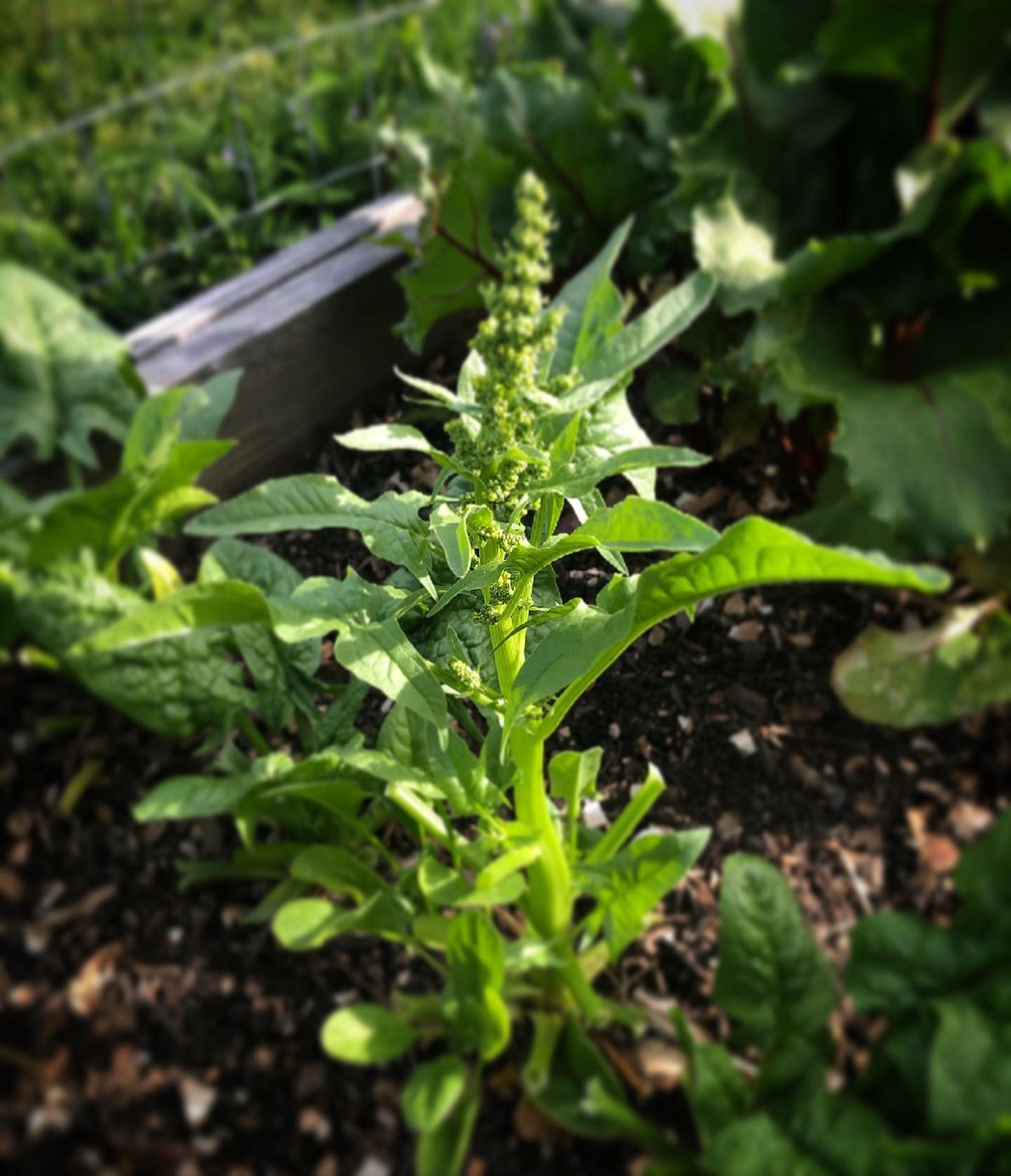
Keeping Spinach Bolting
If, despite your efforts, your spinach plants still bolt, you can employ certain techniques to manage the situation and salvage the crop.
Pinching off flowers
As soon as you notice your spinach plants bolting, promptly remove the flower stalks to redirect the plant’s energy back to leaf production. Simply pinch off the flowering stems at their base to prevent seed formation. This practice can help prolong the leafy stage and allow you to continue harvesting usable leaves.
Seed saving
If you welcome changes in your garden and are open to experimentation, you can allow a few of your spinach plants to go to seed. This can be an opportunity to save seeds for future plantings. However, keep in mind that allowing too many plants to bolt can affect the productivity and quality of the overall crop. It is advisable to seed save from just a few plants and maintain the majority of your crop in a leafy stage.
Kindling cool soil temperature
Keeping the soil temperature consistently cool can help manage spinach bolting. This can be achieved by providing shade, mulching, and even applying a layer of cool water or ice cubes around the base of the plants during periods of intense heat. These techniques can help mimic cooler conditions and discourage the plants from transitioning to the reproductive phase.
Regular care and observation
Regular care and observation are key in preventing and managing spinach bolting. Keep a close eye on your plants, checking for any changes or signs of stress. Address any issues promptly, such as pests, diseases, or nutrient deficiencies, to ensure the overall health and vitality of your spinach crop. By maintaining optimal conditions and addressing issues as they arise, you can minimize the risk of bolting and enjoy a bountiful harvest.
Growing Spinach Indoors
If you lack outdoor gardening space or live in a region with limited access to suitable growing conditions, growing spinach indoors can be a viable alternative. With the right approach, you can successfully cultivate spinach in containers or hydroponic systems.
Choosing suitable containers
When growing spinach indoors, choose containers that are at least 6 to 8 inches (15 to 20 cm) deep to accommodate the plant’s root system. Opt for wide and shallow containers that offer ample space for the plant to spread its foliage. Ensure that the containers have drainage holes to prevent waterlogged soil, which can lead to stress and bolting.
Selecting appropriate lighting
Since indoor environments may lack sufficient natural light, providing supplemental lighting is crucial for healthy spinach growth. Choose full-spectrum LED grow lights or fluorescent lights to mimic natural sunlight. Position the lights 6 to 12 inches (15 to 30 cm) above the plants and provide 14 to 16 hours of light per day to ensure robust leaf development. Adjust the light intensity and duration as needed based on the growth and response of your spinach plants.
Providing adequate ventilation
Proper airflow is essential for indoor spinach cultivation. Good ventilation helps prevent the buildup of excess humidity, reduces the risk of fungal diseases, and ensures healthy plant growth. Use fans or open windows to promote air movement and exchange, and avoid placing the plants in stagnant or poorly ventilated areas.
Watering and fertilizing indoor spinach
Indoor-grown spinach has slightly different watering and fertilization requirements compared to outdoor plants. Water the plants from below rather than overhead to prevent wet foliage and minimize the chances of diseases. Ensure that the soil is consistently moist but not waterlogged. As for fertilization, incorporate a balanced indoor plant fertilizer into the potting mix or use a water-soluble fertilizer at half the recommended strength every three to four weeks to provide the necessary nutrients for leafy growth.
Common Spinach Bolting Issues
Despite your best efforts to prevent spinach bolting, certain issues can arise that are beyond your control. Understanding these issues can help you better manage and mitigate the risk of bolting.
Erratic weather patterns
Unpredictable weather, such as sudden temperature fluctuations or irregular rainfall, can stress spinach plants and trigger bolting. These weather patterns can disturb the plants’ growth cycle and cause premature flowering. While it is challenging to control the weather, being aware of the forecast and taking preventive steps, such as providing adequate shading or row covers, can help mitigate the impact of erratic weather on your spinach crop.
Neglecting plant care
Inadequate care and maintenance of spinach plants can increase their susceptibility to bolting. Failure to provide optimal growing conditions, improper watering, neglecting pest and disease control, and insufficient fertilization can all contribute to plant stress and increase the likelihood of bolting. Regularly invest time in caring for your spinach plants, addressing their needs, and promptly addressing any issues that arise.
Using improper planting techniques
Improper planting techniques, such as shallow or deep planting, can disrupt the growth and development of spinach plants, leading to bolting. It is crucial to follow the recommended planting depth to ensure proper germination and establishment. Additionally, proper spacing and soil preparation are vital in providing adequate resources and optimal growing conditions for your spinach plants. Take the time to understand and implement proper planting techniques to minimize the risk of bolting.
Conclusion
Preventing spinach bolting is essential for ensuring a productive and enjoyable gardening experience. By understanding the causes and effects of spinach bolting, as well as implementing the tips and strategies discussed in this article, you can increase your chances of keeping your spinach plants healthy and productive. Remember to choose the right spinach varieties, provide optimal growing conditions, practice proper maintenance, and be proactive in pest and disease control. With diligent care and attention, you will be rewarded with a bountiful harvest of delicious and nutritious spinach leaves that can be enjoyed in various culinary creations.
